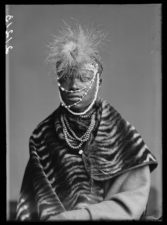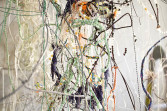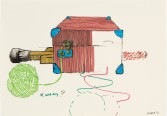
The failures of this show are not immediately in the works, but how the curators chose to conceive it. The short-circuiting and catch-phrasing stunts that have come to typify curatorial practice are slowly leading towards sterility. But if we look beyond the show’s slightly unimaginative presentation, Mlangeni’s images intimately and charmingly indicate a complexity in the Zion church, a complexity only a caring artist has.





